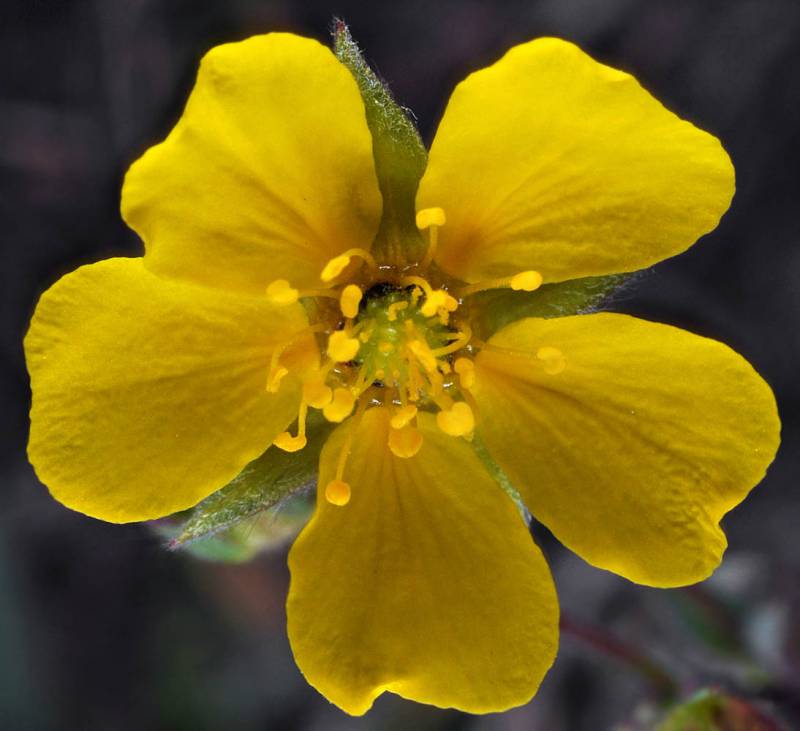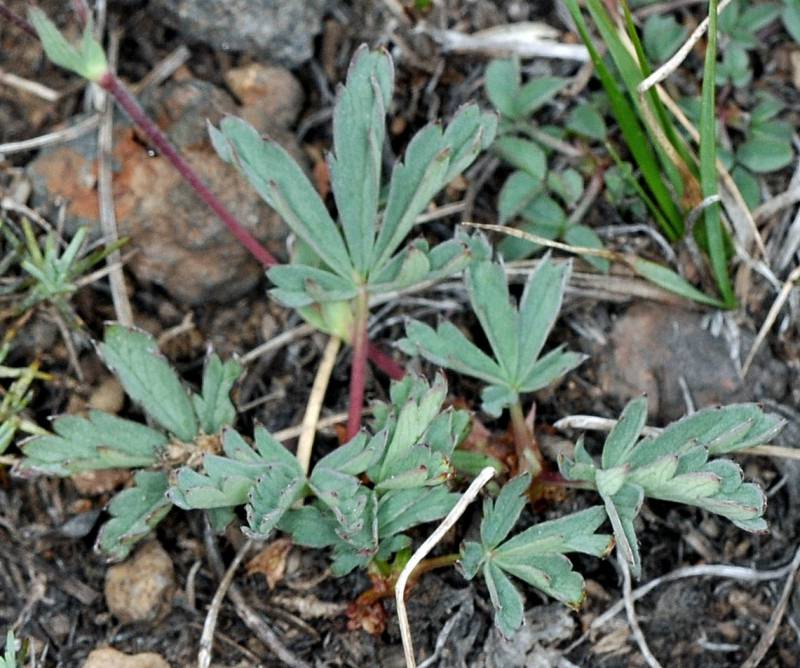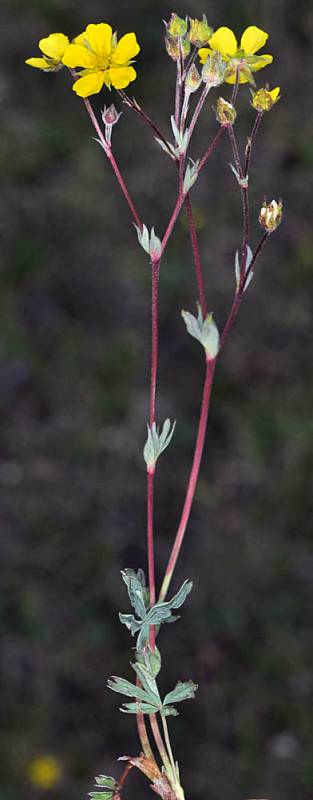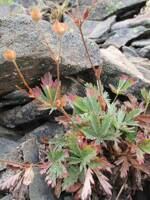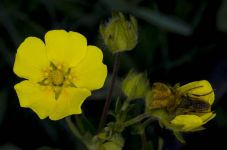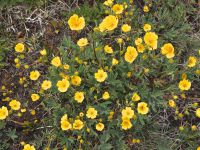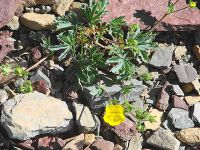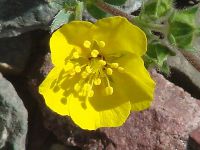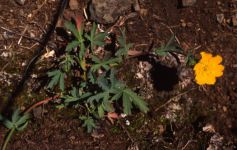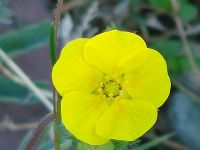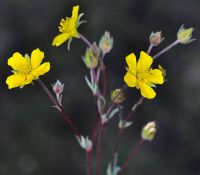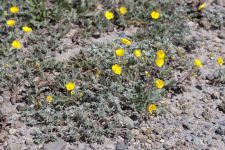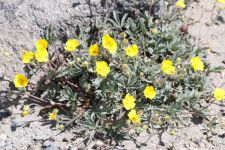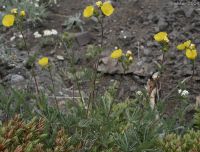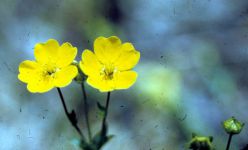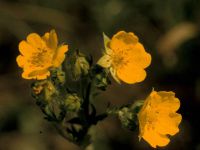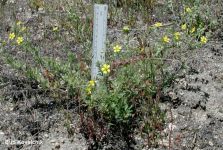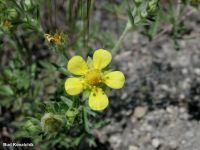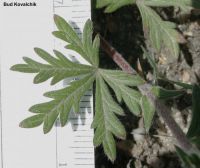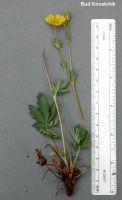Distribution: Occurring on both sides of the Cascades crest and in the Olympic Mountains in Washington; Alaska to California, east to the Rocky Mountains.
Habitat: Moist subalpine and alpine meadows, and along stream banks in high mountain forests.
Flowers: June-August
Origin: Native
Growth Duration: Perennial
Conservation Status: Sensitive in Washington (WANHP)
Pollination: Bumblebees, bees, flies, butterflies, beetles, moths, wasps
Plants 10-40 cm. tall, stems several from a branched caudex; plants cespitose, not rhizomatous.
Leaves mostly basal, palmately or pinnately divided, the blades with 5 main leaflets and 1-2 remote, reduced, entire leaflets; main leaflets triangular-toothed to deeply dissected into narrowly oblong segments, usually silky-gray on the lower surface; cauline leaves 1-2, reduced; stipules 1-2 cm. long.
Inflorescence open, many-flowered; calyx saucer-shaped, silky, up to 1.5 cm. wide in fruit, the 5 lobes triangular-lanceolate, 4-6 mm. long, alternating with linear, shorter bracteoles; petals 5, yellow, obcordate, 6-9 mm. long; stamens 20; pistils numerous, style slender, equaling the fruit and attached just below the tip.
Achene 1.3-1.6 mm. long, weakly net-veined.
Publication: Del. Sem. Hort. Hamburg (1836) 7; Cf. Linnaea, xii. (1838) Litt. 83. 1836.
Potentilla diversifolia Lehm. ssp. glaucophylla (Lehm.) Lehm.
Potentilla diversifolia Lehm. ssp. ranunculus (Lange) A.E. Porsild
Potentilla diversifolia Lehm. var. diversifolia [HC]
Potentilla diversifolia Lehm. var. glaucophylla (Lehm.) S. Watson
Potentilla diversifolia Lehm. var. perdissecta (Rydb.) C.L. Hitchc. [HC]
Potentilla diversifolia Lehm. var. ranunculus (Lange) B. Boivin
Potentilla glaucophylla Lehm. var. glaucophylla [FNA9]
Potentilla glaucophylla Lehm. var. perdissecta (Rydb.) Soják [FNA9]
Potentilla perdissecta Rydb.
PNW Herbaria: Specimen records of Potentilla glaucophylla in the Consortium of Pacific Northwest Herbaria database
WA Flora Checklist: Potentilla glaucophylla checklist entry
OregonFlora: Potentilla glaucophylla information
E-Flora BC: Potentilla glaucophylla atlas page
CalPhotos: Potentilla glaucophylla photos

